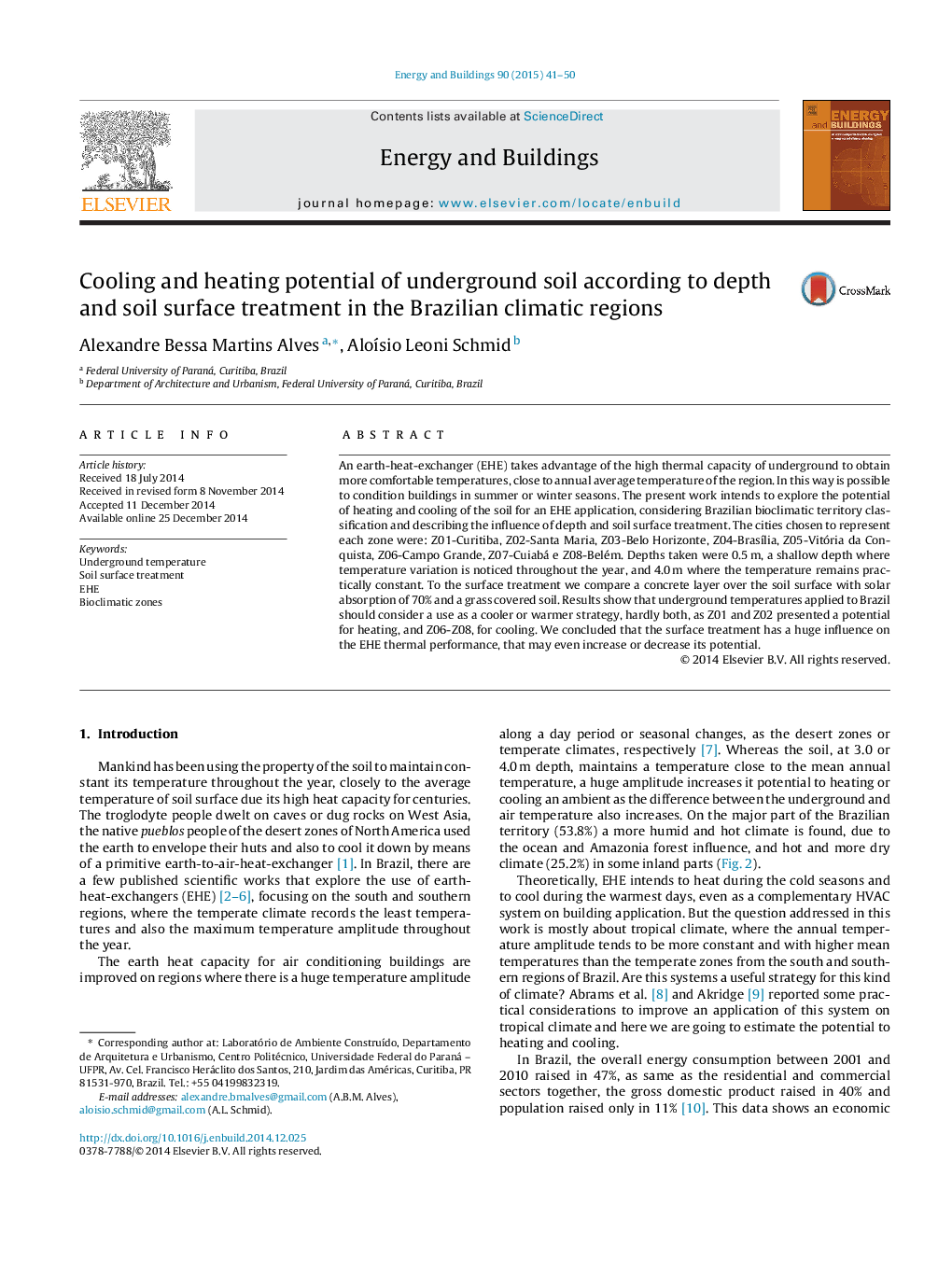| کد مقاله | کد نشریه | سال انتشار | مقاله انگلیسی | نسخه تمام متن |
|---|---|---|---|---|
| 262603 | 504043 | 2015 | 10 صفحه PDF | دانلود رایگان |
• We modeled underground temperature to the eight Brazilian bioclimatic zones.
• We estimated the heating and cooling potential of underground in Brazil.
• At deeper depths the underground tends to supply better the demand.
• Surface treatment may increase or decrease this potential.
An earth-heat-exchanger (EHE) takes advantage of the high thermal capacity of underground to obtain more comfortable temperatures, close to annual average temperature of the region. In this way is possible to condition buildings in summer or winter seasons. The present work intends to explore the potential of heating and cooling of the soil for an EHE application, considering Brazilian bioclimatic territory classification and describing the influence of depth and soil surface treatment. The cities chosen to represent each zone were: Z01-Curitiba, Z02-Santa Maria, Z03-Belo Horizonte, Z04-Brasília, Z05-Vitória da Conquista, Z06-Campo Grande, Z07-Cuiabá e Z08-Belém. Depths taken were 0.5 m, a shallow depth where temperature variation is noticed throughout the year, and 4.0 m where the temperature remains practically constant. To the surface treatment we compare a concrete layer over the soil surface with solar absorption of 70% and a grass covered soil. Results show that underground temperatures applied to Brazil should consider a use as a cooler or warmer strategy, hardly both, as Z01 and Z02 presented a potential for heating, and Z06-Z08, for cooling. We concluded that the surface treatment has a huge influence on the EHE thermal performance, that may even increase or decrease its potential.
Journal: Energy and Buildings - Volume 90, 1 March 2015, Pages 41–50
